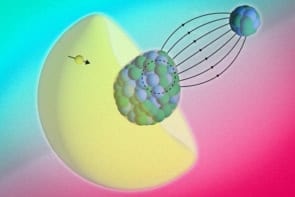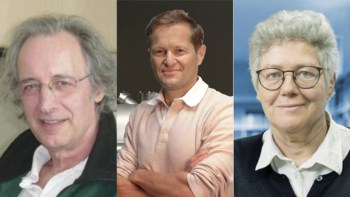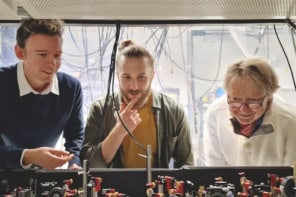A new laser technique has provided the first direct picture of a high-speed chemical reaction on a surface. Ultrashort pulses of x-rays have revealed how oxygen molecules behave on a platinum surface, according to Margaret Murnane and colleagues of the Universities of Colorado and Michigan in the US. The team believes its method will allow chemists to probe a wide range of surface reactions, many of which play a key role in the action of catalysts (M Bauer et al 2001 Phys. Rev. Lett. 87 025501).

Most chemical reactions take place within just a few picoseconds – that is, 10-12 seconds. Several techniques are already available for studying reactions between gases or solutions, but the dynamics of reactions at surfaces is poorly understood. Previous attempts to observe such reactions have produced ‘before’ and ‘after’ pictures, but the advent of laser pulses only tens of femtoseconds (10-15 seconds) in duration has enabled Murnane and co-workers to monitor what happens between the initial and final states.
Murnane’s team chilled a platinum crystal to around 78 kelvin, at which temperature oxygen molecules bond with the crystal surface by accepting an electron from the platinum. This process – known as chemisorption – results in an even layer of oxygen atoms on the platinum surface. The team then excited the surface with infrared lasers, which excites electrons in the platinum, and these electrons then migrate into the oxygen-platinum bond.
To measure how this process affects the bond, the surface was bombarded with pulses of ‘soft x-rays’. These pulses – which lasted for less than 10 femtoseconds – ejected electrons from the valence band of the oxygen-platinum complex. The energies of these electrons reveal the structure of the complex. “Photoelectron spectroscopy has proven useful for studying surface physics and chemistry because the electrons are emitted from only the first few atomic layers”, fellow team leader Henry Kapteyn told PhysicsWeb.
The short x-ray pulses allowed Murnane and co-workers to capture several photoemission spectra as the reaction proceeded. The reaction took around half a picosecond. Their spectra form a ‘movie’ that shows the oxygen molecules twisting on the platinum surface when the extra electrons seep into the bonds. The molecules flip back to their original positions within a few picoseconds.
“Surface chemistry is technologically very important – for example, there are plenty of oxygen molecules on the platinum granules inside an automotive catalytic converter”, says Kapteyn. According to Kapteyn, the next step is to induce a reaction between two different molecules on a surface, such as creating carbon dioxide from oxygen and carbon monoxide. “Following the dynamics of such a reaction will help us to understand how to control them”, he says.


